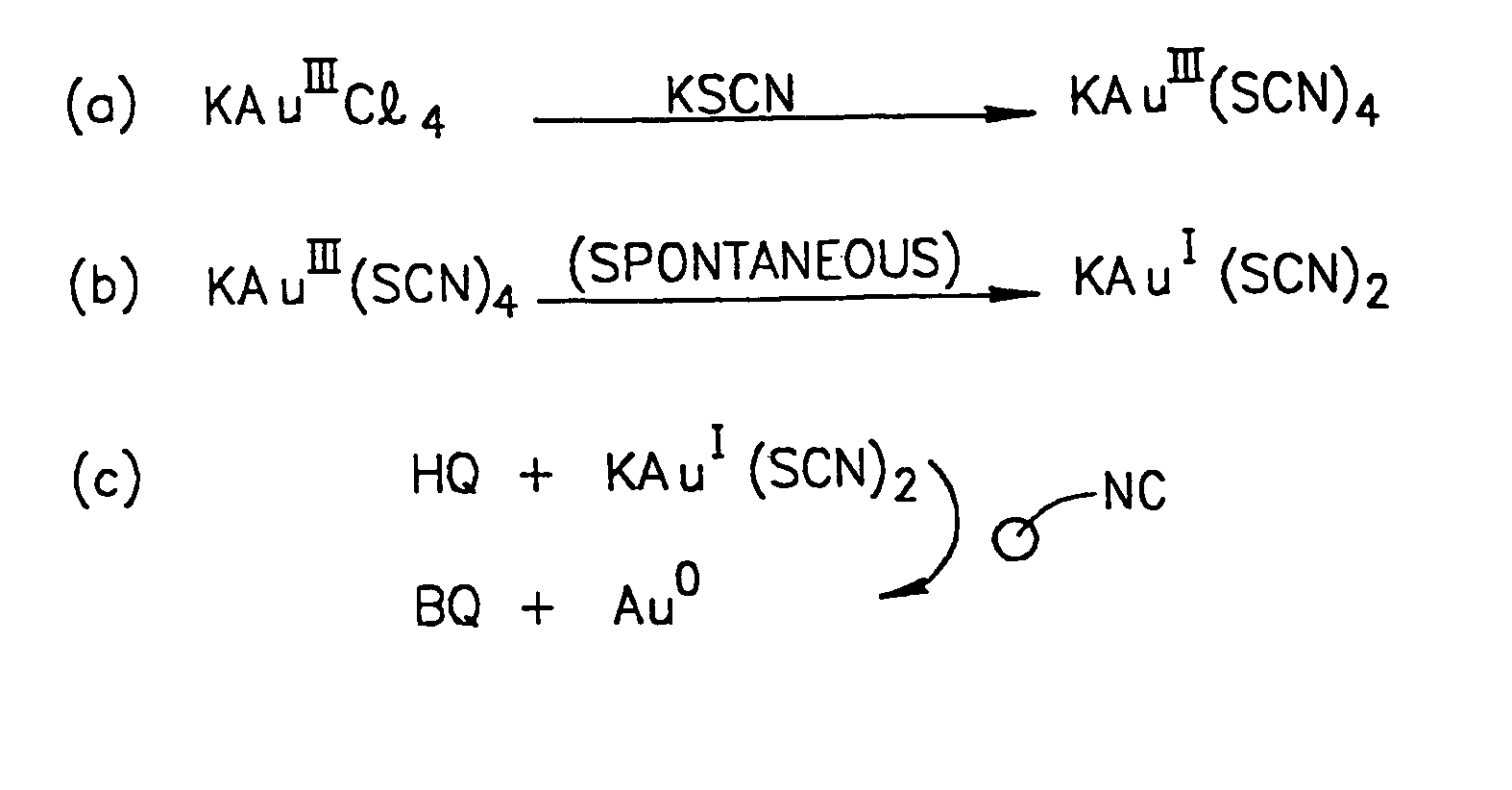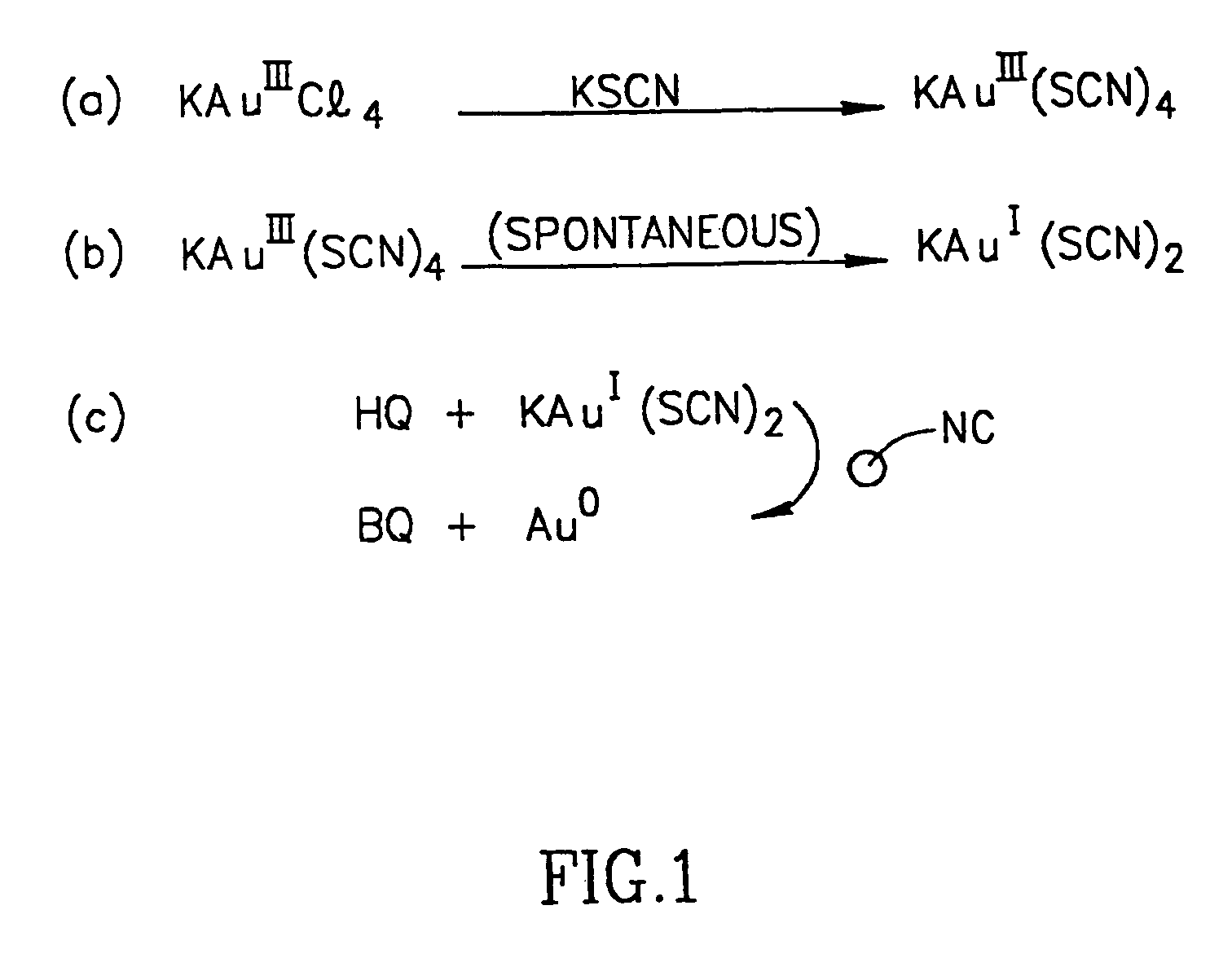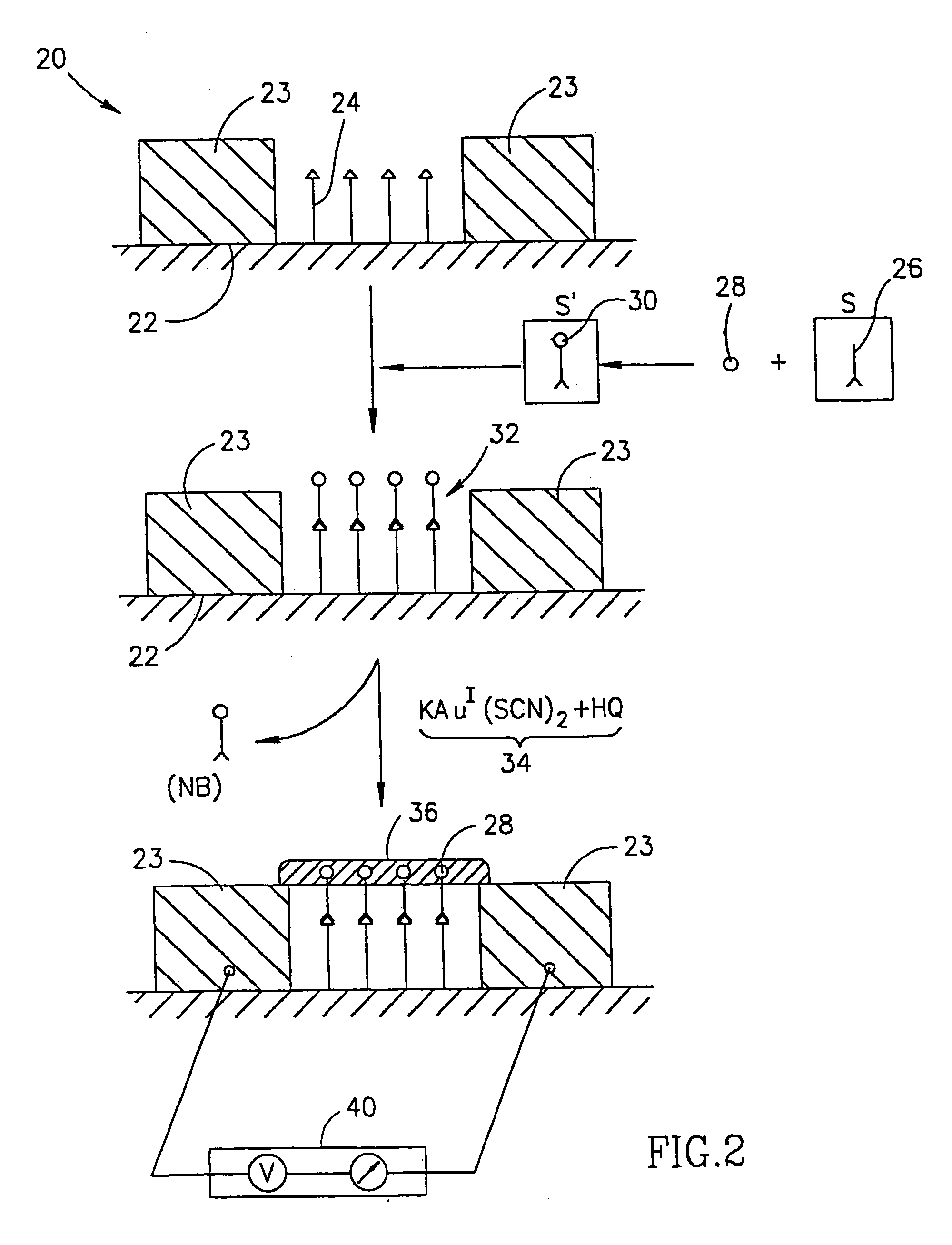Method for gold deposition
a deposition method and gold technology, applied in the field of gold deposition, can solve the problems of limited signal-to-noise ratio, silver deposition may occur, and the deposition is not completely complete, so as to reduce the deposition rate, increase the deposition rate, and reduce the gold deposition rate
- Summary
- Abstract
- Description
- Claims
- Application Information
AI Technical Summary
Benefits of technology
Problems solved by technology
Method used
Image
Examples
Embodiment Construction
[0057] Preparation of a Treatment Composition and General Gold Deposition Scheme
[0058] A treatment composition in accordance with the preferred embodiment of the invention comprises a gold-containing complex-Au.sup.1SCN.sup.-. In order to prepare such a treatment composition at a first stage a solution comprising KAu.sup.IIICl.sub.4 and KSCN is prepared, typically by mixing two stock solutions, one comprising the gold containing complex and the other the KSCN. For example, such a solution may be formed by mixing equal volumes of a first solution comprising about 0.5 M KSCN and a second solution comprising about 0.05 M KAumCl.sub.4. Such mixing results in the formation of the complex KAu.sup.III(SCN).sub.4 (See Scheme (a) in FIG. 1). This complex precipitates but spontaneously forms the complex KAu.sup.I(SCN).sub.2. Typically, after the KAu.sub.III(SCN).sub.4 is precipitated, it is washed and resuspended in water or buffer and allowed to undergo the spontaneous reaction (SPONT.) note...
PUM
| Property | Measurement | Unit |
|---|---|---|
| soluble | aaaaa | aaaaa |
| optical microscopy | aaaaa | aaaaa |
| electron microscopy | aaaaa | aaaaa |
Abstract
Description
Claims
Application Information
 Login to View More
Login to View More - R&D
- Intellectual Property
- Life Sciences
- Materials
- Tech Scout
- Unparalleled Data Quality
- Higher Quality Content
- 60% Fewer Hallucinations
Browse by: Latest US Patents, China's latest patents, Technical Efficacy Thesaurus, Application Domain, Technology Topic, Popular Technical Reports.
© 2025 PatSnap. All rights reserved.Legal|Privacy policy|Modern Slavery Act Transparency Statement|Sitemap|About US| Contact US: help@patsnap.com



